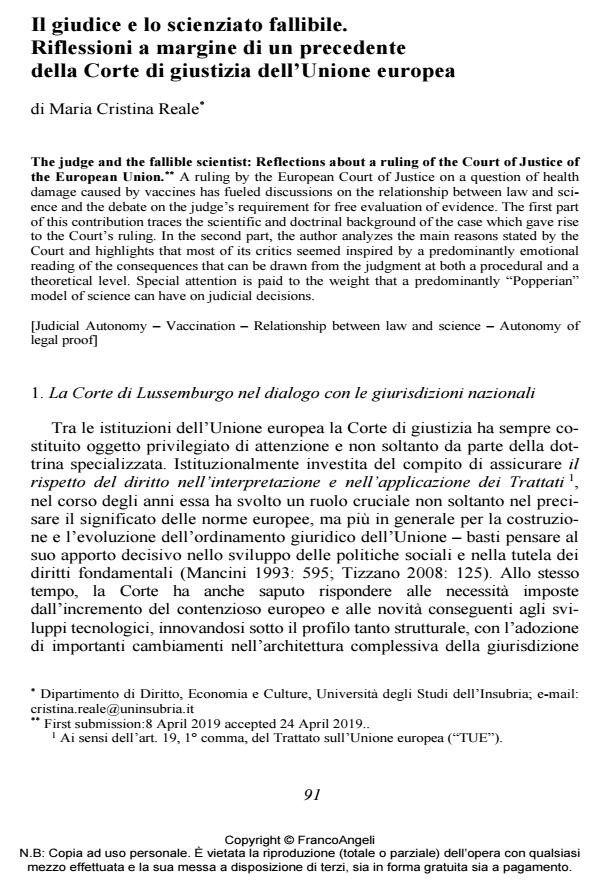The judge and the fallible scientist: Reflections about a ruling of the Court of Justice of the European Union.
Journal title SOCIOLOGIA DEL DIRITTO
Author/s Maria Cristina Reale
Publishing Year 2019 Issue 2019/2
Language Italian Pages 20 P. 91-110 File size 227 KB
DOI 10.3280/SD2019-002004
DOI is like a bar code for intellectual property: to have more infomation
click here
Below, you can see the article first page
If you want to buy this article in PDF format, you can do it, following the instructions to buy download credits

FrancoAngeli is member of Publishers International Linking Association, Inc (PILA), a not-for-profit association which run the CrossRef service enabling links to and from online scholarly content.
A ruling by the European Court of Justice on a question of health damage caused by vaccines has fueled discussions on the relationship between law and science and the debate on the judge’s requirement for free evaluation of evidence. The first part of this contribution traces the scientific and doctrinal background of the case which gave rise to the Court’s ruling. In the second part, the author analyzes the main reasons stated by the Court and highlights that most of its critics seemed inspired by a predominantly emotional reading of the consequences that can be drawn from the judgment at both a procedural and a theoretical level. Special attention is paid to the weight that a predominantly "Popperian" model of science can have on judicial decisions.
Keywords: Judicial Autonomy - Vaccination - Relationship between law and science - Autonomy of legal proof
Maria Cristina Reale, Il giudice e lo scienziato fallibile. Riflessioni a margine di un precedente della Corte di giustizia dell’Unione europea in "SOCIOLOGIA DEL DIRITTO " 2/2019, pp 91-110, DOI: 10.3280/SD2019-002004